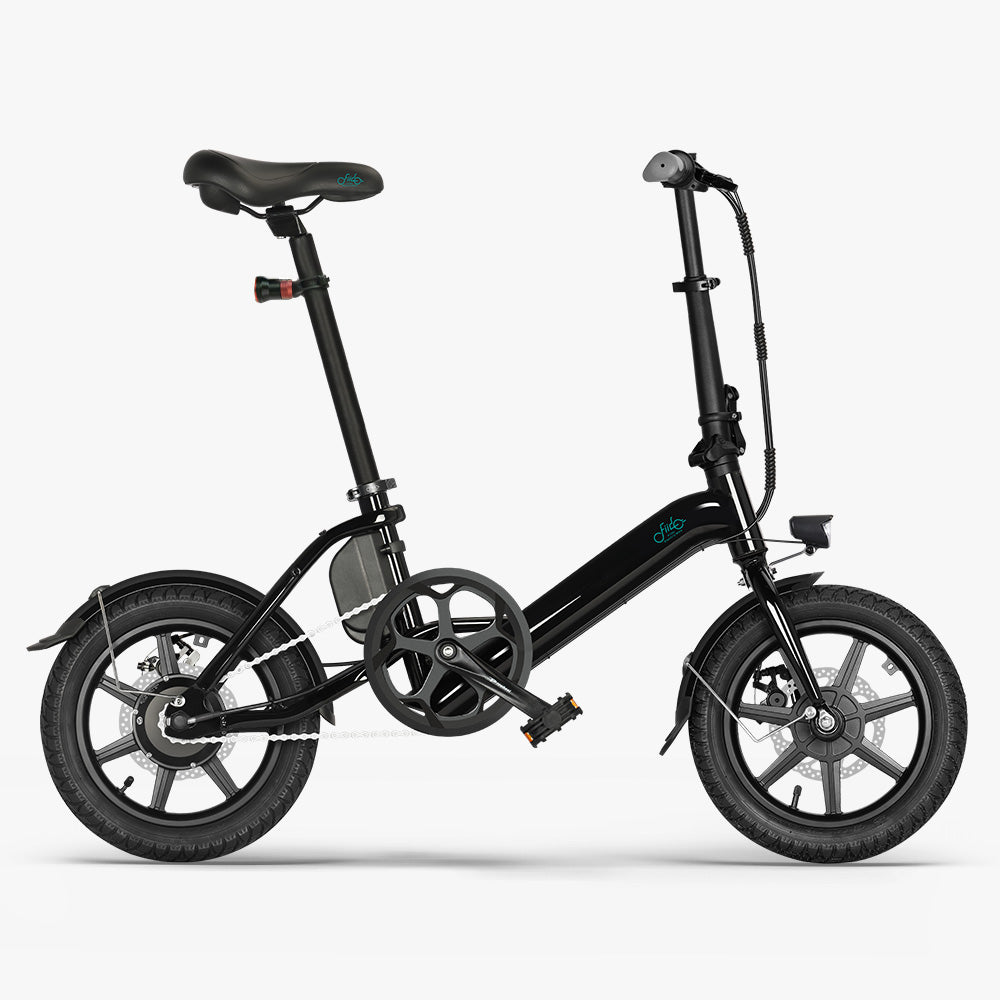Riding an electric bike for the first time usually brings a mix of excitement and surprises. The biggest difference from a regular bike is the “pedal assist” — when you lightly press the pedals, the motor immediately gives you a push, making acceleration noticeably easier, almost like the wind is carrying you forward. While this is fun, many beginners also find that it’s faster and more powerful than expected. That’s why knowing some practical tips can make your first ride both enjoyable and safe.

What Should You Do Before Your First Electric Bike Ride
1. Before getting on the bike, make sure the battery is fully charged. Most electric bikes display the charge in 4–5 bars, and it's best to start with a full charge. Also, check that the battery is securely installed. Gently shake it by hand — if it moves, the latch isn't properly locked and needs to be fixed.
2. Lightly squeeze the front and rear brakes to distinguish between them. On most electric bikes, the left brake lever controls the front wheel, and the right lever controls the rear wheel, but this can vary by region or brand. Beginners should test this in an open area first, because improper braking at high speed can have more serious consequences due to stronger momentum.
3. Check that the tire pressure is appropriate. The recommended range is usually printed on the tire sidewall. Low tire pressure not only affects stability but can also significantly reduce range. Also, familiarize yourself with the power switch, assist levels, display, and light buttons before you head out — don’t wait until you're on the road to figure them out.
Once the bike is checked, it's time to protect yourself
Electric bikes are faster and heavier than regular bicycles, and in the event of an accident, your body will hit the ground directly — the risk is higher than you might think. Safety gear isn't just for looks; it helps reduce injury when it counts.
A helmet is the most basic and crucial piece of gear. Even a small fall can cause a head injury, so it must be worn. Gloves prevent your palms from slipping due to sweat and protect your hands in case of a fall. Proper sneakers provide solid support — never ride in flip-flops or sandals.
Additionally, if you plan to ride at night or in traffic, reflective clothing or lights are equally essential. Many accidents don't happen because of your own mistakes, but because other drivers “didn't see you.” A reflective strip on your clothing or remembering to turn on your bike light can be key to keeping you safe.
How to Ride an Electric Bike for the First Time
Starting Off
The safest way to start is to set the pedal assist to the lowest level (Eco or Level 1). This keeps the power output gentle and allows you to adapt gradually. Once you're on the bike, place your feet naturally on the pedals and start pedaling lightly. Wait until the bike begins to move before gradually increasing the assist level, rather than switching to a high level immediately. This not only prevents sudden acceleration and loss of control but also helps you get a feel for the coordination between pedaling and the motor.
If your bike has a throttle, in Europe, pedal-assist electric bikes may have a 6 km/h throttle for starting. Be careful: never twist the throttle sharply while stationary. Doing so can make the bike lurch forward like a motorbike, which can startle you and potentially endanger others. The correct approach is to let the bike move slightly first, then gently apply the throttle so that power engages smoothly.
While Riding
Staying relaxed is key while riding. Don't grip the handlebars too tightly — just hold them steadily. Keep your eyes on the road ahead, not on your feet. In a familiar environment, gradually try different assist levels to find the most comfortable rhythm. Also, learn to monitor the display panel — remaining battery, current assist level, and speed indicators all help you manage your ride and avoid running out of power or losing control unexpectedly.
Remember, electric bikes are often faster than regular bicycles, and pedestrians or drivers may underestimate your approach speed. Always anticipate slowing down and maintain a safe distance.
Braking and Stopping
Proper braking is crucial when slowing down or stopping. For regular stops, rely mainly on the rear brake, gently adding a bit of front brake to bring the bike to a stable stop without pitching forward too much.
In emergencies, use both front and rear brakes together, applying slightly more force to the front brake. This ensures sufficient stopping power while reducing the risk of flipping over. On downhill sections, generally rely on the rear brake, because overusing the front brake can cause the front wheel to skid and lose traction, creating danger. Mastering braking techniques for different scenarios will help you ride your electric bike more confidently and safely on your first ride.

Typical Issues Electric Bike Beginners May Encounter
How to Choose Your First Electric Bike For beginners, focus on safety, ease of control, and comfort. Removable batteries are preferred for convenient charging. A lighter frame (20–25 kg) makes handling and storage easier. Choose a braking system with front and rear disc brakes for responsive stopping. Adjustable seats, moderate suspension, and a clear display also enhance the riding experience. For more details, see our article: How to Choose the Best Electric Bike.
Is It Hard for Beginners to Ride an Electric Bike? At first, pedal assist may make pedaling feel much easier than expected, but the higher speed compared to a regular bike can cause a sense of “lack of control.” Beginners often notice sweaty palms or grip the handlebars too tightly during starts, accelerations, or turns — all normal adaptation reactions.
Are Turning and Avoiding Pedestrians Difficult? Electric bikes are heavier and less agile than regular bikes. Beginners may feel slow to react or tense when adjusting their path around pedestrians or vehicles. The solution is to anticipate obstacles, observe the route ahead, and maintain a safe speed and distance.
Which Electric Bike Is Suitable for First-Time Riders
Overall, the Fiido D3 Pro electric bike is a compact, foldable, and lightweight city e-bike designed for easy urban commuting with low maintenance.
-
Folded Dimensions: 1240 × 300 × 610 mm (compact for easy storage and transport)
-
Tire Size: CST 14 × 2.125 inches (small, durable tires ideal for city streets)
-
Weight: 17.3 kg
-
Maximum Load: 120 kg
-
Frame Material: Aluminum alloy (lightweight and sturdy)
-
Suspension: None (rigid frame for a smooth urban ride)
-
Gearing System: None (single-speed simplicity, easy to ride)
-
Brakes: Mechanical disc brakes with power cut-off (safe and reliable stopping)
-
Electric Assist Range: Approximately 79 km
-
Torque: 35 N·m (provides responsive and intuitive pedal support)
-
Motor: Quiet, low-resistance motor for effortless city riding
Fiido D3 Pro Mini Electric Bike
The most affordable and adorable electric bike.
Reminder: Prices are subject to the product detail page ,some earlier card details may have been updated.
Mastering the Experience
After your first ride, you'll gradually gain practical experience that makes future rides easier and safer: you'll learn to select the right pedal assist for different terrains, coordinate front and rear brakes effectively, manage starting, acceleration, and turning with a relaxed and steady posture, monitor your dashboard and battery usage, and anticipate road conditions to maintain safe distances. With these skills, even short trips become more controlled and confident — once you’ve mastered them, you’ve officially become an intermediate rider.
















